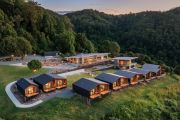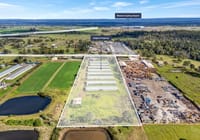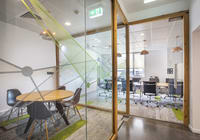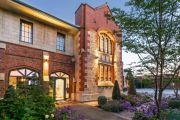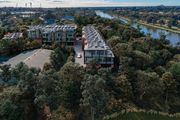
Collingwood's 408 Smith shopfront can be leased for only one day
A new short-lease retail space has opened in Collingwood, with the founders hoping to reenergise the local streetscape by expanding their idea of leasing, adapting and then subletting other nearby abandoned shopfronts.
British architect Ben Edwards, the director of Studio Edwards who founded 408 Smith, said they saw the space as the first in a project like “Airbnb, but for retail.”
The flexible space, he told Commercial Real Estate, could be leased for a period as short as one day.
“Short-term seems to be the way a lot of things are going – with retail, with hospitality – the idea that you can try spaces out, or try things out, is very exciting.”
The space has an adaptable fit out, constructed from plywood and aluminium, that can be continuously reconfigured to suit evolving needs of tenants.
The project was inspired after Mr Edwards observed an increase in abandoned local shopfronts. In Fitzroy and Collingwood, “there are approximately 380 spaces for lease that are retail or ground-floor tenancies”, he said, some that “have been empty a very long time”.
For landlords, he said, the residential part of the building was often “where the money is” and the shopfront of buildings was simply “the leftover bit”. Often retail spaces were empty, he said, because “taking on a long retail lease can be prohibitive to some start-ups and brands”.
Because, it’s not ideal “if you are about to start your business, and you’ve got to take an $80,000 lease, and then you fold within in a few months if the business doesn’t work”.
Scott Williams, director of Pop Up Shops Australia, a “social media resource for the pop-up community” and Instant Retail, which leases pop-up shop fittings, said the short-lease-space phenomenon wasn’t new. The pop-up movement was “about 10 years old,” he said.
He cited US-based The Storefront, a global platform established in 2014 that offered “thousands of quality spaces all around the world” and linked them to tenants, as one of the more successful platforms he had observed over the past decade.
“Middlemen” were beneficial in the short-lease world, he said, because “pop up isn’t very popular” with real estate agents.
“You get these people who want to rent a space for a week, or a month or two months or something,” he said, “and the agent has to go through all of the work with the landlord, and write up licences, and there’s not much benefit in it for the agent.”
Typical problems included being able to constantly and consistently fill the spaces, he said, as the leaseholder was liable to pay the rent, “whether or not there is a pop-up tenant in the space or not.”
While short-lease spaces could be beneficial for emerging designers and brands, and “give the landlord or the sub-tenant a bit of income” said Mr Williams, it could also have larger social benefits.
Traditional high street retail areas – such as Chapel Street in Prahran, which is experiencing a “surge” of vacancies – are increasingly affected by “landlords, the impact of online retailing and the exodus of overseas and local brands from retail strips to the CBD and mega malls,” wrote the Australian Financial Review.
Mr Williams said, “There’s nothing worse than a shop just being empty for ever and ever. It gets dusty and mouldy and the letters fold under the door.”
It’s a negative domino effect, he said, because the “surrounding traders start to suffer. If one shop closes there’s less people walking past. Then the next guy finds it harder, and he closes, and then the street is on a downward spiral.”
Mr Edwards said that short-lease spaces, such as 408 Smith “can bring them back into use so they’re not sitting there empty.” He imagines a reinvigorated Smith Street.
“There will be more engagement in terms of the street and the frontage and the public domain.”



